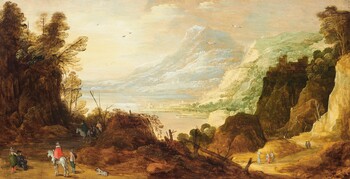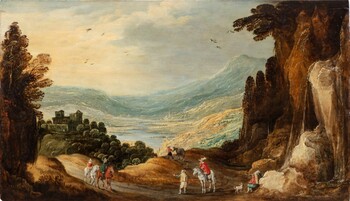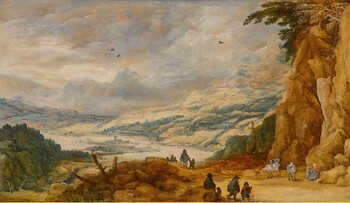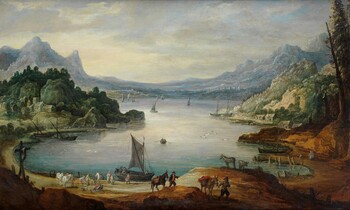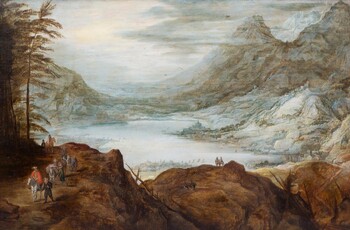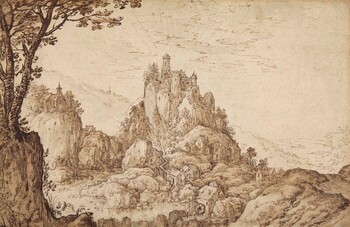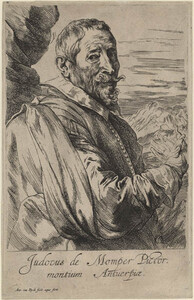21.000 €
A mountainous landscape with a fortification giving onto a lake, in the foreground three men accompanying two prisoners
Oil on panel : 49,0 X 93,2 cm
Unsigned
Frame : 65,4 X 110,1 cm
Provenance : Gallery De Boer Amsterdam, 1959.
Published by Klaus Ertz in “Josse de Momper der Jüngere. Die Gemälde”, 1986, P. 122, Plate 85 and P. 460, Cat. Number 7.
Dr. Ertz dates our painting circa 1600/1610.
In short
Joos de Momper II was the most important Antwerp landscape painter of the first decades of the 17th century. He specialised in spectacular panoramic Alpine views, painted in the traditional Late Mannerist three colour scheme. His art was very popular during his lifetime. During the last quarter of the 19th century artists and collectors alike were in utter choc when they discovered his “Impressionist” technique.
Our painting is not only an excellent, but also an early example of his dexterity and talent. In his later works de Momper tended to repeat himself, using the help of assistants. Here one can admire his delightful free brushwork and his rendering of atmospheric conditions.
About Joos de Momper II
Flemish painter
Antwerp 1564 – 1635 Antwerp
Important Late Mannerist Flemish landscape painter, especially of mountainscapes.
Son and pupil of Bartholomeus de Momper I. The de Momper family originally came from Bruges.
In 1581, at the young age of 17, Joos II joined already the local Painter’s Guild of Saint Luke in Antwerp as a Master. He got married in Antwerp in 1590. Between those two dates, 1581 and 1590, he must have travelled to Italy, to Rome. His crossing of the Alps would have a decisive influence on his artistic production. It is thought that de Momper studied in Venice under Lodewijk Toeput, known in Italy as Ludovico Pozzeserrato (Antwerp circa 1550 – 1604/05 Treviso). During the late 16th century many Flemish landscape painters travelled to Italy: besides de Momper and Toeput, I should mention Mathijs and Paul Bril, Tobias Verhacht and Pauwels Franck.
In 1611 de Momper became Dean of the Antwerp Painter’s Guild.
About our painting
There are very few signed paintings or drawings known by de Momper.
His production was very important. Luckily our painting dates from early in his career (from the first decade of the 17th century), Dr. Ertz therefore saw it as a fully originally work. Later, thanks to his increasing success, de Momper employed several assistants and students. The Master and his workshop increasingly repeated variations of successful compositions. I stress here again that this is not the case in our painting.
De Momper’s art must be seen against a Flemish landscape tradition that goes back to Pieter Brueghel the Elder and even to Joachim Patinir. How exotic for a Flemish painter, inhabitant of a flat country, to specialise in mountainous Alpine views. In his traditional Mannerist, panoramic landscapes set against a high horizon line de Momper used the codified succession of different distinct shots, traditionally divided over the brown foreground, green middle distance and bluish background. The technical name for this perspective system is ‘coulisse landscape’, referring to the drapes and curtains used on a theatre stage. His fictitious, detailed compositions were based on his real observations of hills, mountains, lakes, villages.
Why should you buy this painting?
Because it is early, single-handed painted masterpiece.
Comparative paintings
Click photos for more details

